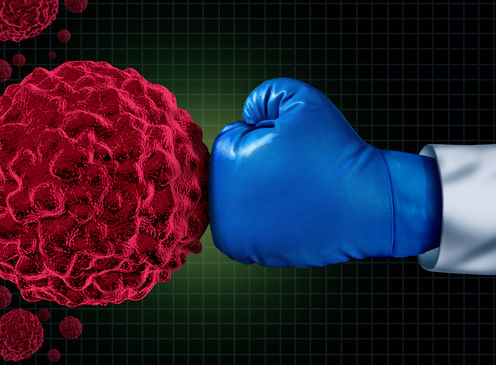
The past 40 years have seen a significant improvement in cancer survival. In the 1970s, only one cancer patient in three made it through the first five years after diagnosis.
The corresponding figure today is around 70%, and exceeds 85% for some cancers that were previously fatal.
What’s more, the trend of roughly 1% increased survival for every year that passes, is being maintained with our growing understanding of “cancer biology” – that is, what causes cancer and how cancer cells grow and spread.
New treatment options have flowed directly from this knowledge.
Conventional therapies: the three pillars
Until a century ago, the only hope of curing cancer was surgical removal. But two new treatments emerged in the middle of the 20th century: radiation therapy and chemotherapy. These remain indispensable in mainstream treatment.
Further progress in these disciplines is limited by their inability to discriminate between cancer cells and important normal cells. Patients undergoing radiotherapy and chemotherapy usually lose hair, feel extreme nausea and are prone to life-threatening infections due to reduced numbers of white blood cells.
This century’s approaches to developing new forms of chemotherapy are radically different from a generation ago. Our new understanding has identified specific weaknesses that can be targeted by “designer” therapies, and treatments can increasingly be personalised to the cancer of any one individual.
Because these new drugs (which are a type of personalised medicine) specifically attack cancer cells, they have far fewer side effects than conventional chemotherapy.
Just as exciting as these is the realisation that a patient’s own immune system is a powerful agent in defeating cancer. Immune-based strategies are now in advanced clinical trials in dozens of studies around the world.
Checkpoint blockade and adoptive immunotherapy are two examples of the fourth and newest pillar of cancer therapy, the first such advance in 50 years.
Checkpoint blockade
When a virus infects us, the immune system responds by activating “killer cells” to multiply and rid the body of the invader. When the danger has passed, a brake is applied to the immune system. Remaining extra immune cells die, swelling settles and things return to normal.
Many cancers have learnt to use this “brake” mechanism to “switch off” immune killer cells trying to eliminate them. Turning the switch back on with specific antibody therapies can wipe out enormous numbers of cancer cells.
Antibodies are naturally occurring proteins generated by the immune system to neutralise viruses and toxins. Scientists are now engineering new, therapeutic antibodies that mimic natural ones.
In checkpoint blockade, an antibody is given to a patient through an intravenous infusion. The antibody binds either to the cancer or immune cell to prevent the cancer cell from turning on the brake.

The prototype therapy is the antibody ipilimumab (Yervoy), reported to have saved the life of former Liberal Party national president Ron Walker from late-stage melanoma.
But as Yervoy and similar agents activate the immune system, one drawback is that it can become over-activated in some patients, and start attacking normal tissues. This can be managed with anti-inflammatory therapies.
Agents similar to Yervoy work in some cases of lung and kidney cancer. Many other forms of cancer are currently being trialled.
Checkpoint blockade is not only capable of clearing enormous tumours, but the results appear durable. Once awakened, the immune response to cancer generally persists, which is wonderful news.
But because not everyone is able to spontaneously raise killer cells against their cancer, not every patient benefits from checkpoint blockade treatment. Removing the brake in such patients has no effect.
We now have a way around this problem. Adoptive immunotherapy can provide patients with “tailored” killer cells.
Adoptive immunotherapy
This second strategy uses a process called apheresis, where a machine harvests just the killer cells from a person’s blood, while returning all the other cells to the patient.
Then, in special labs built to extraordinary levels of cleanliness to avoid contamination, the killer cells receive a gene that codes for a receptor to guide them back to the patient’s cancer.

With the receptor, the cells become killer cells the patient previously lacked, called chimeric antigen receptor T cells (CAR T cells). After 10 or 12 days, when enough CAR T cells have been grown in the lab, they are given back to the same patient through a vein.
They are now able to “home” to cancer cells anywhere in the body.
Once in contact with cancer, they do three things. First, they kill cancer cells directly. Second, they divide making more killer cells at the site of the cancer. And third, they set up inflammation in the tumour so the immune response spreads.
Adoptive immunotherapy is close to becoming “standard” for certain types of cancer where other available therapies have been exhausted.
Several successful trials have been reported using CAR T cells in cases of advanced acute lymphocytic leukemia (ALL), the most common cancer in children. In one such recent trial, a child considered close to death was successfully treated with CAR T cells prepared from immune cells of an unrelated person.
At present, immune-based therapies are relatively expensive. CAR T cell treatment, for example, costs about the same as a bone marrow transplant. But cost will fall as the technologies for cell production improve.
It is safe to say there has never been more hope for cancer cures. Ever.
Joseph Trapani receives funding from the National Health and Medical Research Council, Government of Australia, The Wellcome Trust, UK, Cancer Council Victoria, Australian Cancer Research Foundation and the Victorian Cancer Agency. Professor Trapani is currently Executive Director Cancer Research and Head of the Cancer Immunology Program at Peter MacCallum Cancer Centre, Melbourne, Australia. He is also a member of the Executive (Board) of the Cancer Council Victoria and Chair of it’s Medical and Scientific Committee.
